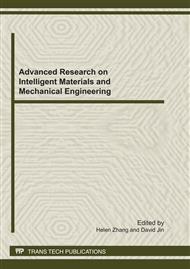p.218
p.222
p.226
p.230
p.234
p.240
p.246
p.252
p.256
Edge Isolation Using Ultra-Short Pulse Laser Materials with a Top-Hat Beam Profile
Abstract:
Laser grooving is an existing industrial solution for solar cell junction isolation. However there is still plenty room to improve this process. Potential approach includes choosing proper laser wavelength, tuning laser pulse width and laser focus beam profile, etc. We have recently investigated laser edge isolation of crystalline silicon solar cells using an ultra-short pulse laser. In this study we carried out isolation test using the same laser with a top-hat beam profile. A comparative study between isolation using top-hat and Gaussian is launched. The geometry of laser scribed grooves and the electrical performance of the cells are characterised. More homogenous ablation and material removal are achieved using top-hat hence the dopants from the isolation groove area are eliminated efficiently. The results from I-V characterisation confirm that more efficient isolation process and better isolation quality can be achieved using top-hat.
Info:
Periodical:
Pages:
234-239
Citation:
Online since:
August 2011
Keywords:
Price:
Сopyright:
© 2011 Trans Tech Publications Ltd. All Rights Reserved
Share:
Citation:


